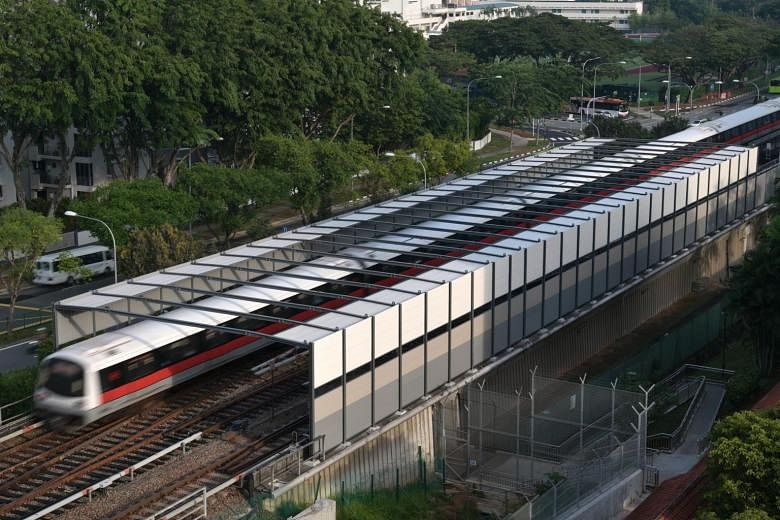Noise pollution from major transport projects is now being tackled head-on, but more actors than just the Government must play a part to address this issue, Transport Minister Khaw Boon Wan said yesterday.
Speaking at a visit to a Housing Board carpark in Cheng San to observe how barriers built along MRT tracks have helped shield residents from train noise, he said that noise-dampening wheels may be used on trains plying the new Jurong Region Line (JRL).
New advancements in technology to reduce noise from the contact between trains and tracks are being monitored, and noise barriers will be erected along major upcoming road projects.
While these are part of the Government's efforts to tackle transport noise pollution at an earlier stage, property developers should play their part too, said Mr Khaw, who is also Coordinating Minister for Infrastructure.
"Developers know about our rail and road projects years in advance of their construction," said Mr Khaw, adding that they can take steps to address noise at the outset and design away the disamenities.
"Developers should also alert potential buyers to the potential noise disamenity," he said.
Mr Khaw listed the authorities' renewed efforts to address noise pollution for residents living in the vicinity of major transport projects, which are not just ma-jor irritants, but also impact property prices.
Yesterday, the Land Transport Authority (LTA) awarded the third and final phase of its Railway Noise Barrier Programme - which began in 2013 to install noise barriers along MRT viaducts - to PBT Engineering.
However, it is not easy to install noise barriers on a live MRT line, said Mr Khaw, noting that it requires "a herculean effort" to lift and erect the support columns on to the viaduct.
Earlier closures and later openings for these works also inconvenience commuters. That is why the Government is taking steps to tackle the problem of noise pollution at an earlier stage, he added.
For instance, the upcoming JRL - a 24-station line that will begin construction next year and open from 2026, serving residents in the Choa Chu Kang, Boon Lay and the future Tengah estates - will be built overground with noise barriers.
The LTA is also considering the use of noise-dampening wheels and better lubrication for the JRL trains to minimise noise at the source.
A similar approach is being adopted for major road projects, such as the Changi Northern Corridor, which will help improve connectivity for residents in the Changi region and support growth of businesses and jobs there.
"Noise barriers will be installed on the new viaduct along Loyang Avenue to mitigate the impact of traffic noise on nearby residences," said Mr Khaw.
But his suggestion to get developers to play their part might be difficult to implement in practice without regulation, an expert said.
Having to "design away the disamenities" might increase costs, noted Mr Nicholas Mak, head of research and consultancy department at ERA Realty. "So, unless the law compels developers to measure noise and state it in decibels, it would be difficult to make developers alert potential buyers."
He added: "The thing about noise is that what is acceptable or unacceptable to each person is subjective to the buyer."
But the impact on property values is real. Mr Mak estimates that living near noisy tracks and roads can cost property owners about 3 per cent to 5 per cent of their property's value.
SEE TOP OF THE NEWS


